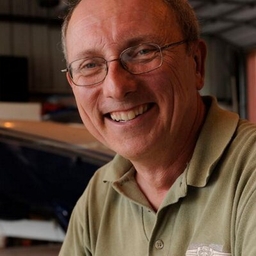-
2 weeks ago |  kitplanes.com | Paul Dye
kitplanes.com | Paul Dye
About 16 years ago, I received an email from the editor in chief of KITPLANES magazine (Marc Cook) asking if I’d like to become a regular contributor, writing columns, features, and flight reviews. He’d seen my words on various internet forums and thought I might have something to say.
-
3 weeks ago |  kitplanes.com | Paul Dye
kitplanes.com | Paul Dye
One of the challenges with a traditional build—where everything isn’t defined by plans or a kit—is figuring out where to drill “arbitrary” holes. You might know you need a hole in the firewall to route wiring, but where exactly should it go? There are usually many viable options—but some locations that look perfect on one side might conflict with a weldment or structure on the other. The plans often won’t help—you’re on your own.
-
3 weeks ago |  kitplanes.com | Paul Dye
kitplanes.com | Paul Dye
If you want to start a lively (never-ending) debate on any experimental aviation internet forum—or in the airport pilot lounge—just bring up the idea that you’re thinking about an alternative engine for your next project.
-
3 weeks ago |  kitplanes.com | Paul Dye
kitplanes.com | Paul Dye
While shaping the aluminum canopy skirts for our F1 project, we needed to put a relatively sharp crease into the top edge—about 3/4 inch down. Since this was beyond the reach of a typical edge-breaking tool, we found a block of Delrin we had lying around and used the bandsaw to cut a notch—coincidentally the same width as the skirt material thickness—3/4 inch deep. We held the skirt in our vise and ran our homemade “creasing tool” down the length, introducing a twist with the wrist.
-
1 month ago |  kitplanes.com | Paul Dye
kitplanes.com | Paul Dye
“The ship is now on internal power!”That’s always great to hear when launching a spacecraft—it means you’ve cleared the preflight checklist and are nearly free of all ground support equipment.
-
1 month ago |  kitplanes.com | Paul Dye
kitplanes.com | Paul Dye
Radiant Technologies (www.radiantinstruments.com) has a penchant for using new and innovative technology to build inexpensive instrumentation for experimental and ultralight aviation. We’ve flown with their solid-state altimeters, airspeed indicators, angle of attack indicators, and turn-and-bank instruments—just to name a few. Their latest product is a compact, USB-powered carbon monoxide (CO) monitor that plugs into any powered USB-A port in your airplane.
-
1 month ago |  kitplanes.com | Paul Dye
kitplanes.com | Paul Dye
It’s been a while since we provided an update on the big picture of our F1 project—mostly because we’ve been heads-down, working on the many details of fitting and assembling the canopy and its skirts. To bring those following along up to speed: The fuselage is at the point where we’re nearly ready to put it on the gear and hang the engine, so we can start the firewall-forward work—engine systems, baffles, and cowling.
-
1 month ago |  kitplanes.com | Paul Dye
kitplanes.com | Paul Dye
One of the bugaboos of acrylic canopies is fastening these massive—and flexible—components to rigid canopy frames when the thermal expansion coefficients differ significantly from metal. Cracks often develop in tightly drilled holes secured with screws or rivets—so adding some form of flexible canopy fasteners is a good idea if you can. Oversized holes are one way to mitigate the issue; adding a rubber grommet to an even larger hole is another.
-
1 month ago |  kitplanes.com | Paul Dye
kitplanes.com | Paul Dye
The instructions that came with the 20-plus-year-old F1 Rocket kit we’re building include a very “down home” tip in the canopy section. Mark Fredericks, the author—and creator of Team Rocket and the F1—writes: “Make sure to add a handle to the top of the front canopy bow so that the first time you get in the seat, don’t close the canopy—you don’t have to call someone from outside to open it and let you out!” You can bet that came from experience.
-
1 month ago |  kitplanes.com | Paul Dye
kitplanes.com | Paul Dye
CubCrafters—the Cub company from Yakima—dropped in on us with a brand-new NX Cub a few weeks ago and asked us to drop them at the airline terminal, leaving the Cub on our ramp with the instructions to “have fun—fly it as much as you can!” This is the very first XCub built from a kit, so they felt we at KITPLANES were the appropriate folks to check it out. Look for a full review in our July issue—but in the meantime, here are just a few things you can do with a Cub in western Nevada.

kitplanes.com | Paul Dye
kitplanes.com | Paul Dye
kitplanes.com | Paul Dye
kitplanes.com | Paul Dye
kitplanes.com | Paul Dye